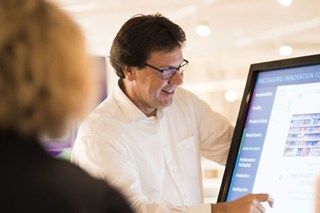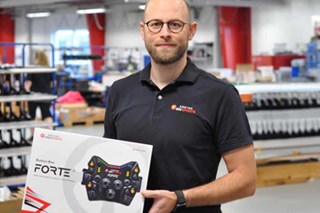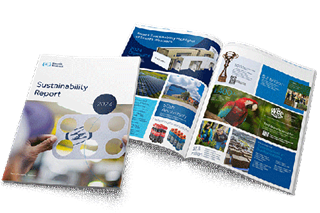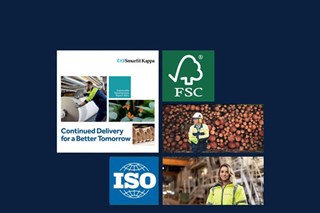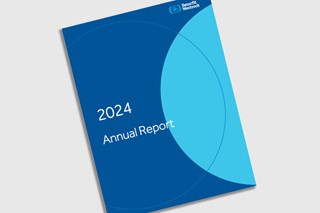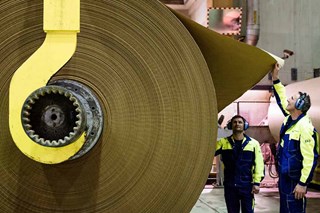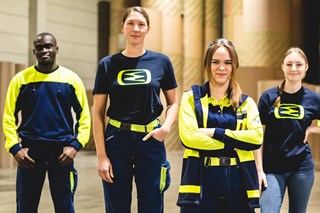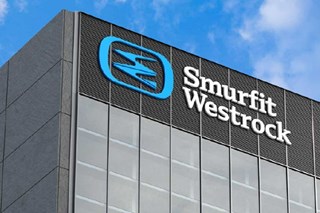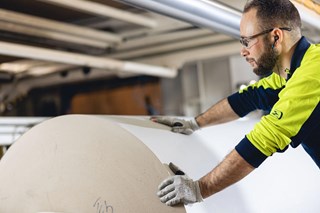Replacing plastic trays for JR Foods ready-made meals to meet sustainability targets
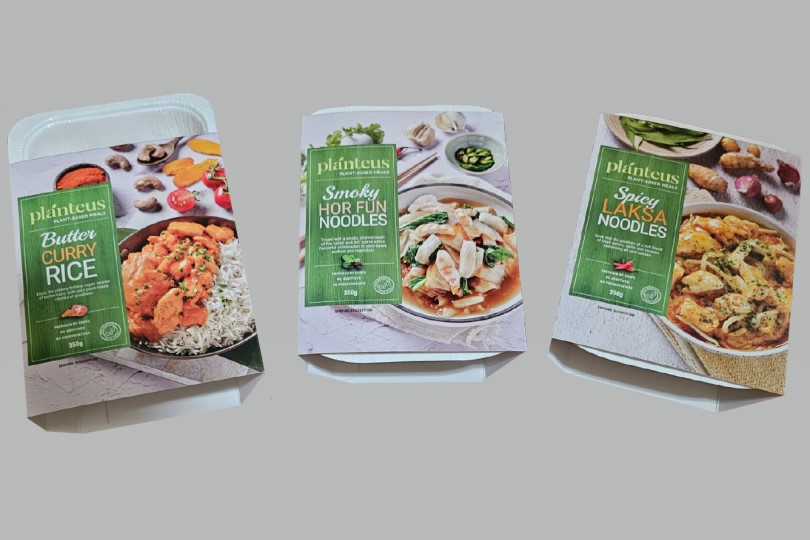

As consumers, we’re pretty accustomed to frozen food that comes in paper-based packaging. After all, some of us eat our ice cream right out of the paper-based carton; but what about frozen food intended to be heated in the oven or microwave?
On the surface, paper packaging doesn’t seem like the best option there. But it’s not only possible, it’s preferrable for brands wanting to achieve greater sustainability and circularity by reducing or eliminating single-use plastic.
For decades, plastic trays have been the go-to for frozen, prepared foods. It’s watertight, can be microwaveable and has the ability to protect frozen food from dehydration. However, understanding the need to make packaging more circular and facing looming government regulations, many brands like JR Foods are committed to reducing and eliminating their plastic packaging.
Specializing in restaurant-quality, frozen, ready-made meals, JR Foods is based in Singapore and distributes its frozen meal brands in Australia. The company took Australia’s national packaging targets (APCO) very seriously, welcoming the challenge to make their packaging more sustainable.
Packaging guidelines and regulations in Asia and Australia
While Singapore set forth its national sustainability targets (Singapore Green Plan 2030) more recently in 2021, APCO worked with the national government and businesses to establish ambitious packaging targets in 2018, one of which is to make all packaging 100 percent reusable, recyclable, or compostable by 2025. The targets are guidelines for private industry and completely voluntary, but JR Foods was determined to meet those goals.
“We not only want to align with the values and goals of our customers but respond to the call to build an environmentally and socially responsible Singapore by aligning with APCO and the Singapore Green Plan,” saidJR Foods COO Tony Chng
Because Australia is far from meeting their 2025 APCO goals, the country’s Department of Climate Change, Energy, the Environment, and Water made a commitment to reform national packaging regulation by 2025. So, it’s likely mandatory requirements are on their way.
Thanks to Smurfit Westrock’s innovation in paper-based trays for frozen, ready-made meals JR Foods is not only on its way to meeting the APCO 2025 packaging targets as an individual business, but also leading the way Down Under and in Singapore. They’re showing other brands how it can be done.
The anatomy of an early adopter
JR Foods is no stranger to innovation, and it’s accustomed to being an early adopter in the industry. Founded with a mission of creating restaurant-quality ready-made meals over 20 years ago, the company was an early pioneer of cook-chill and cook-freeze technology. It also launched Singapore’s first hot vending machine in 2008 and Asia’s first unmanned vending machine cafe in 2016.
Besides new processes and technology, the company also values sustainability and became an early adopter of sustainable practices. It's not only embraced the APCO packaging targets but also works closely with Singapore’s Ministry of Environment. The team’s future goals include integrating more ESG compliance practices across its business.
“We are working hard to adopt energy-efficient equipment and technologies and make more efficient use of our resources to further reduce our carbon footprint, minimize waste, and conserve natural resources. We’re also implementing more risk management policies and processes, as well as financial controls,” said Chng.
The unique challenges of frozen meal packaging
With an understanding of the sustainability goals in both countries, JR Foods took on the challenge of replacing traditional plastic trays for its Plánteus plant-based frozen, ready-made meal line, aiming to use a paper-based tray instead. The team chose Smurfit Westrock as its packaging provider because of its commitment to circularity and ability to help them meet sustainability goals.
“We really wanted a partner that not only understood sustainable practices at each stage of our product lifecycle, but that also practiced what they preach, having an established ESG framework,” said Chng.
Because of its ready-made meal packaging process, the team knew this posed additional challenges for Smurfit Westrock. First, JR’s team uses a blast freezing technique to lock in the natural flavors of their meals that are prepared by trained chefs, sometimes in collaboration with award-winning chefs who lend their names and expertise to certain meals.
“The tray is filled when the product is hot and then it goes through a chill blasting process to bring the temperature of the entree to negative 40 degrees Celsius,” said Sze-Heong Ooi, Smurfit Westrock’s APAC sales and business development director working with JR Foods. “Then, it’s transported to retail freezers from there.”
Not only do the paper-based trays have to be leak-proof and withstand this process, but they also have to be suited for dual-ovenable heating, meaning they can be heated for consumption in either an oven or a microwave. Handling one extreme is a challenge, but the new trays needed to handle the extremes of freezing cold and two different kinds of oven heat.

The previous plastic tray used for Plánteus packaging and the new TruServ pressed tray.
New paper tray—same automation
JR Foods also had to think about the requirements of its packer and its packaging line. Sometimes new packaging requires using a different type of machinery for automation. But if Smurfit Westrock could design trays that could be used with existing machinery, that would make the transition much easier and more seamless.Smurfit Westrock packaging developers partnered with packer Confoil Australia to form their TruServ® Pressed Trays to look and perform like JR Foods’ plastic trays. To make sure the new trays could be used with existing machinery and packaging techniques, having the help of a major packer was necessary. Thanks to a close relationship with Confoil, the team was able to make the new trays work with the existing packaging line. “When they switched from plastic to fiber based, they did not change their filling line, so they're using all their existing equipment. Their fiber-based tray is exactly the same size as their plastic tray,” said Ooi.

The new Plánteus packaging with TruServ paper-based trays.
What JR Foods achieved with TruServ Pressed Trays
Thanks to pressed trays that contain renewable fiber, JR Foods reduced their use of plastic packaging for the food line by over 93 percent. A happy byproduct of making the packaging shift meant they also reduced the weight of a packed meal by over 30 percent compared to meals in their previous trays.1 The weight difference meant the company would gain savings on shipping and transport.
To fully understand the environmental impact of the change, JR Foods conducted a life-cycle analysis (LCA) that showed a ripple effect of improvements.
“What our LCA revealed is that using this new tray provided us many environmental benefits. We’re seeing reductions in solid waste, energy demand, water usage and our CO2 emissions,” said Chng.
In addition to the sustainability gains, the company’s Plánteus packaging with TruServ won a 2023 Singapore Packaging Star Award in the category of Commercial Environmental Sustainable packaging.
Reaching that 100%
Reducing plastic use by over 93 percent is no small accomplishment, but JR Foods has their eye on the APCO target of 100% renewable, reusable, or compostable packaging. In order to reach that goal, the company continues to work with Smurfit Westrock to innovate their sustainable packing.
To achieve the functionality JR Foods needed, it was necessary for the TruServ Pressed Tray to use a polymer-based coating, which means a small percentage of plastic is still needed. But thanks to the latest in barrier coatings being developed at Smurfit Westrock, JR Foods is looking forward to testing the next iteration of pressed trays, which will provide further reduction of plastic.
Smurfit Westrock often partners with customers to innovate and develop new products, customers who trust our thorough testing and rigorous development process. If you have a need but aren’t finding what you’re looking for in the marketplace right now, it’s worth it to reach out to our team of innovators. Together we can pursue the untapped possibilities of paper.
1. There is a 93% reduction in plastic when compared to their previous fossil-fuel-based plastic trays. The previous plastic trays weighed 22.5 grams, and the current TruServ pressed trays weigh 15.5 grams, reducing weight by 31 percent.
Products used by this client
TruServ® Paperboard Portfolio
See how we’ve helped other customers



Get in touch
* Mandatory Field


